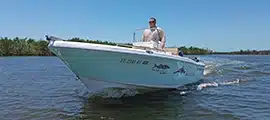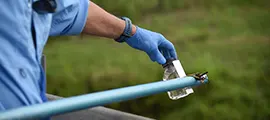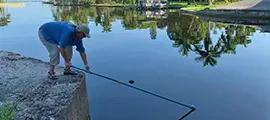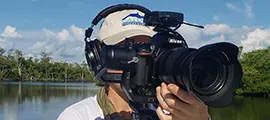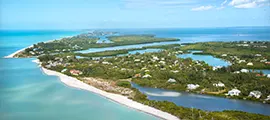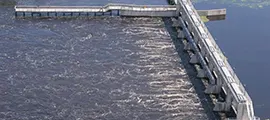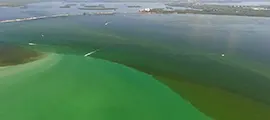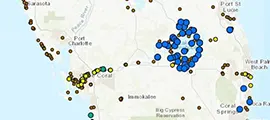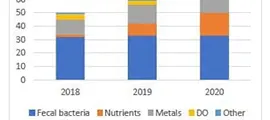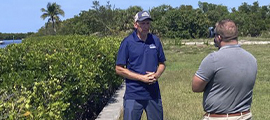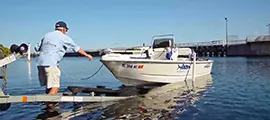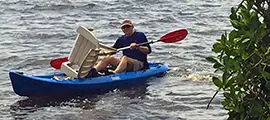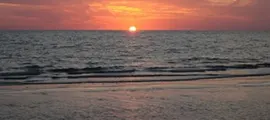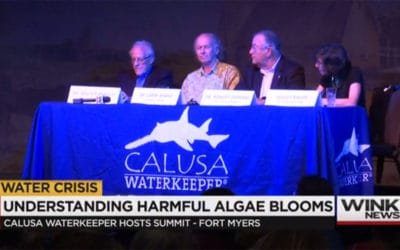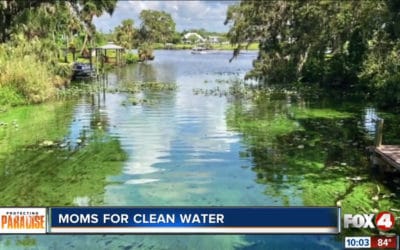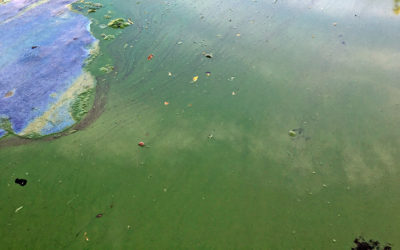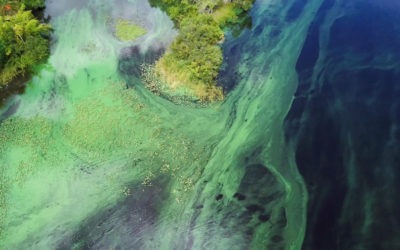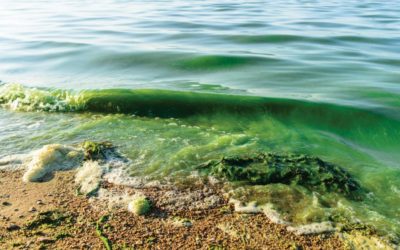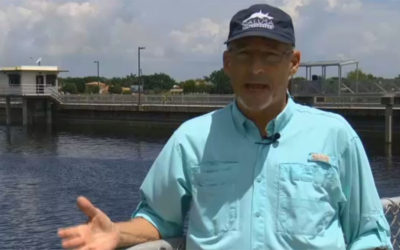Calusa Waterkeeper
In the News
Hundreds Gather at Waterkeeper Event in Fort Myers to Discuss Toxic Algae and Public Health
The summit began with a screening of “Toxic Puzzle,” followed by a panel discussion that included Dr. Walter Bradley, Dr. Larry Brand, retired public health nurse and Waterkeeper ranger Holley Rauen and Robert Zarranz, a Fort Myers otolaryngologist and surgeon.
Experts Say Public Awareness is Critical at Water Quality Summit
Experts gathered at a Florida water quality summit to speak about harmful algal blooms in our waterways regarding health hazards and other dangers. Scientists who spoke at the Calusa Waterkeeper town hall said public awareness is the most critical aspect for SWFL’s water quality issues.
Words from the Waterkeeper, Episode 2
Calusa Waterkeeper John Cassani's update on upcoming events, Caloosahatchee conditions reports, and information on cyanobacteria identification.
Moms for Clean Water Initiative Working for Change
Waterkeeper’s Florida now has a new initiative, Moms for Clean Water, asking moms to write a letter to first lady Casey DeSantis to share how your kids are impacted by the poor water quality. Corey McCloskey is doing her part by educating others through a water quality task force.
Waterkeepers Florida Recommends State Standards for Cyanotoxins
Waterkeepers Florida submitted comments to the Florida Department of Environmental Protection, as part of their triennial review process. In the letter, we lay out the history and importance of Florida accepting and codifying a numerical standard for cyanotoxins.
First Seasonal Rains Causing Pollutants to Flush Toward Rivers & Gulf
The beginning of the rainy season brings with it a concentrated blast of nutrient-rich waters to rivers, lakes and bays as heavy rains wash off months of built-up pollution. It’s called the “first flush effect,” and it’s been happening across the state in recent weeks.
Return of Florida’s Toxic Algae Season Signals need for Bolder Solutions
Floridians re-awakened in recent days to our annual horror show: The return of highly toxic blue-green algae. We know a lot about the things that play an outsized role in triggering our recurring toxic nightmare and yet we fail to take any meaningful steps to reduce this escalating issue.
Conservation Groups Sue Federal Agencies Over Lake O Releases
Enjoy an interview by WGCU Media with John Cassani from Calusa Waterkeeper, and Jaclyn Lopez, Florida director at the Center for Biological Diversity, to get the latest on their lawsuit against federal agencies including the US ACOE, FWS and NMFS.
Government Watchdog says State & DEP Misleading Public about Drinking Water Quality
Public Employees for Environmental Responsibility, (PEER) released a report last week that says more than half of the state’s drinking water facilities have violations that aren’t being reported to the public by the Florida Department of Environmental Protection.
Calusa Waterkeeper Tackles Water Quality and Public Health
Ground-breaking research – particularly on environmental toxicity and potential inhalation risks – sent flashing alarms that the health threats from HABs may be exponentially more dangerous than we surmised, lending increased urgency to communicating the most current data to a public starved for information.
Environmental Groups Filed a Lawsuit Against Lake Okeechobee Water Releases
Calusa Waterkeeper, John Cassani filed a lawsuit yesterday with the Waterkeeper Alliance and Center for Biological Diversity against the Army Corps of Engineers for failing to address human and wildlife concerns in regards to Lake Okeechobee water releases.
Summit to Address Public Health Risks of Harmful Algal Blooms
The Calusa Waterkeeper invites the public and healthcare professionals to a public water summit to include a screening of the groundbreaking documentary “Toxic Puzzle,” followed by an expert panel, including two scientists featured in the documentary.
